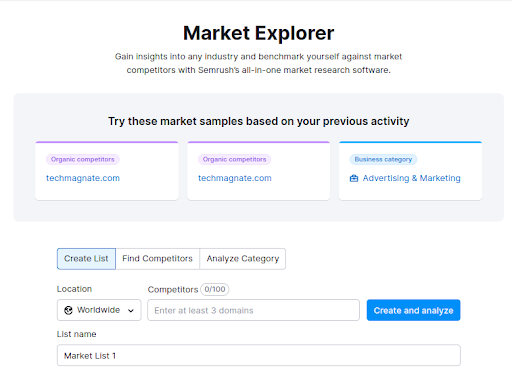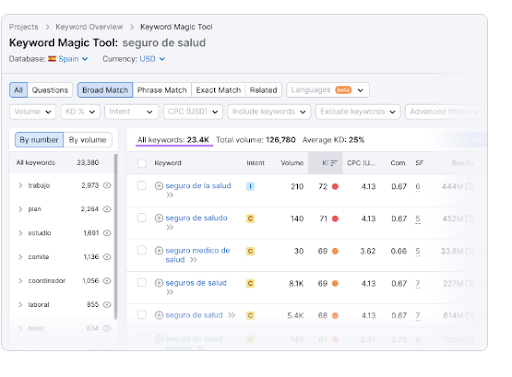Multilingual SEO Guide for International Languages and Countries
December 22, 2023
Prashant Shukla
What has been updated from the old blog post: This new draft gives you answers on how to conduct multilingual SEO for different locations and languages.
Summary: This comprehensive guide provides detailed insights into multilingual SEO optimizing your website for multiple languages and targeting diverse international audiences. Learn how to conduct keyword research, localize content, implement hreflang tags, and build backlinks to enhance your website’s visibility in search engines worldwide.
In today’s interconnected world, businesses are no longer confined to their home markets.
The Internet has opened up a vast array of opportunities for businesses to reach new audiences and expand operations across the globe. However, venturing into the international realm requires a strategic approach, particularly in terms of search engine optimization (SEO).
In this blog post, we will tell you how to reach international borders with multilingual SEO and how they are important for your business. We’ll also take you through the implementation strategy for the same.
Let’s get started!
What is Multilingual SEO
Multilingual SEO means what it sounds like – SEO in multiple languages.
In contrast to SEO, which optimizes your content in one language, Multilingual SEO involves using optimized content in multiple languages or one local language.
It makes it easier for search engines such as Google to index you for local search results. The strategy requires adding localized keywords and search terms to ensure users find the website page or content in their native language.
Hiring the right set of translators is important as they can assist you with the content technicalities. But, make sure they work in tandem with the multilingual SEO experts.
Your content should connect with the local audience, but it should also get indexed by Google or other search engines. Therefore, the right multilingual SEO strategy is required to see effective results.
Additional Read: What is SEO
Why Multilingual SEO is Important for Businesses
Multilingual SEO makes your service more global, allowing you to access foreign markets successfully.
Let us understand this with an example: A business wants to target a Spanish audience in Spain and Mexico. With the help of Multilingual SEO, you can capture the phrases and local flavor to reach out to the target audiences in each country. It is similar to optimizing the website for a domestic audience.
Some key benefits of multilingual SEO are:
A great opportunity for businesses
As per a survey, English is the most popular language online, representing 25.9 percent of worldwide internet users. As a result, most of the information online is written in English. So it excludes a large portion of the population from accessing most online content.
Multilingual SEO represents a great opportunity for businesses looking to grow into new markets and a different audience.
Connect with a wider audience
An online survey by CSA Research noted that 76% of online shoppers are more comfortable shopping on sites that provide information in their local language. The survey was conducted across 29 countries from Asia to Europe and North & South America. Forty percent of the 8709 global consumers have never shopped online from websites in languages other than English.
Brands need to connect with a wider audience, and what better way to do so than by talking and responding to them in a language they understand?
Establish a foothold in the international market
The best thing that brands looking to gain a foothold in the international market can do is optimize their website in the language of their target audience. It’s the key to unlocking new markets and driving sales. Reaching new customers means a brand has ventured to become a multinational company instead of staying a local player.
How Multilingual SEO Works (International Businesses)
Using Multilingual SEO, you can offer optimized online content in different languages for different or even states. However, there are approximately 7,000 languages spoken around the world.
So, which one should a brand choose and use? This is where the role of Multilingual SEO comes into play and it is, therefore, essential to know how it works.
1. Do Market Research to Identify the Target Audience, Location & Keywords
Identify the audience’s needs
Any SEO strategy has to start with an understanding of your audience and their search habits. Try Semrush’s tool for quick market research.

Identify search trends of your audience. What are they searching for? When are they searching for products and services similar to yours? Who are your competitors? Knowing who the audience is will help you plan the type of content to create, and the platforms where you can interact with your audience.
Simultaneously, identify the target languages that your audience speaks, and make sure you have country-specific solutions.
Check the user behaviour to analyze what they expect when they visit a particular webpage and ensure the information you provide meets their requirement.
Do Keyword research
Keyword research will help you identify the best multilingual SEO keywords and phrases. The higher the search volume of a keyword, the more important it is for you to incorporate those into your multilingual SEO strategy.

Image Source: Semrush
In short, the goal is to find keywords with a high monthly search volume; however, be realistic. If you are new to the market, start with long-tail keywords (that’s how people search nowadays). Go ahead and use the keywords on which your competition is ranking to increase your chances of a higher SERP rank.
Here are the details of what you should do:
i) Localize your SEO strategy:
While conducting keyword research for a new market it is important to check which keyword terms users type in the search.
For the same product, various markets may use different terms. In the United Kingdom, a farmer looking for a pest management solution would type in “pesticide for mice,” however a direct translation of this term might not work in markets where mice aren’t a common concern.
Use Google Ads Keyword Planner to figure out how people in a new market perform searches.
It provides a monthly search volume for various keywords and phrases.
Google Trends is another useful tool that allows you to compare search volume for different terms over time.
ii) Check current traffic on your website
You may use Google Analytics to help you figure out which keywords are already driving traffic to your site. The information can help you come up with fresh keywords to target.
If you sell bags, for example, and you notice that people are looking for “purchase bags online” in French, you could wish to target that keyword.
iii) Target local search engines
While Google is the most popular search engine in many countries, it is not the only one. In some markets, you should also target locally popular search engines, such as Baidu in China or Yahoo! Japan in Japan.
A smart local SEO strategy would incorporate the latest trends of the local search engines to bring traffic and leads to your site.
2. Technical considerations
Create dedicated URLs and separate domains:
It is a common practice to get separate domains for different countries. For example, www.amazon.in is a domain for the Indian audience.
Create unique URLs with language indicators to avoid content duplication penalties. Language indicators help search engines identify the language from the URL itself.
For instance, the original URL might be www.yourwebsite.com, the Spanish version could be www.yourwebsite.com/es or the French version could be www.yourwebsite.com/fr.
Use hreflang tags:
It tells search engines which language you are using on a specific page so that it can serve that result to users searching in that language. It helps them understand that the web pages are localized variations of the same content.
Hreflang tags can be inserted in the header section of the original page or submitted via a sitemap.

If a page is intended for multiple regions, multiple hreflang attributes can be added.
3. Create meta-data in the target language:
Along with translating and localizing your website, it is also important to localize your website’s title tags, meta description, and meta keywords.
Search engines will crawl this data and show it to your users. It is required for your website to rank on the location that you are targeting. Use keywords with high searches and less competition in a particular location.
4. Build backlinks
Backlinks are an important part of building a multilingual website. They are a major ranking factor as more quality backlinks help websites rank better. If you have a travel blog and want to backlink a hotel from Paris, the domain having a French connection can be valuable.
Additional read: Types of Backlinks
Here are some effective strategies to get quality backlinks:
- Broken Link Building: Find broken links on other websites and offer your working links as replacements. Start by spotting broken pages on competitor websites using tools like Semrush’s Backlink Analytics. Make similar content and ask websites linking to those broken pages to use your links.
- Digital PR: Get media coverage for your brand by sharing interesting stories with news portals. If you have research or news that’s relevant to your industry, pitch it to media outlets for potential coverage and backlinks. Tools like Prowly can help you find suitable media contacts.
- Competitor Backlink Research: Look at your competitors’ links to see what content gets the most attention. Use Semrush’s Backlink Analytics to explore their link profiles. Create similar content to earn backlinks and compete better in your industry.
Additional tip: Hire Multilingual SEO experts
Consult an SEO expert who is familiar with the target market to help you figure out the user intent behind certain search queries. If the target market is the UK or US, brands should not hesitate to trust experienced multilingual SEO experts from India.
Why Multilingual SEO Is Beneficial For Business Benefits
Recognition and Branding on an International Scale
Multilingual SEO has tremendous advantages for establishing your company’s rapport with local and international customers. Because they understand the language better, you can efficiently market your products or services to foreign clients.
Competitive Market Advantage
A multilingual website helps show your company a more corporate and professional aura. Future clients will be more confident in evaluating your services and products because your company provides them with a secure feeling due to its multilingual availability.
Better Access for Prospects
If you’re seeking an international market, having a multilingual website allows your online business to take advantage of local resources. It’s crucial to examine the search engines used in specific nations, which may only be available in their native language. As a result, having a multilingual SEO helps you provide better access to potential clients.
Improves Online Traffic
A larger market helps increase your website’s online traffic, allowing for better search results. This assists search engines in recognizing your website as a trustworthy source. Aside from that, increased online traffic can lead to increased sales of your services or products.
Cost-effective marketing
Finally, offering multilingual SEO is a cost-effective way to market your business. Setting up a unilingual SEO is nearly as expensive as setting up a multilingual SEO. Even if your current target market is local, having the website available in multiple languages will help you decide to expand your target market.
An investment in multilingual SEO and website translation will be worthwhile. Optimizing your multilingual website for some popular global search engines will dramatically boost your company’s success. With more traffic to your website, you can expect a significant improvement in business activities, especially in the foreign market.
We also offer complete expertise in Multilingual SEO Services! Contact us for smooth business visibility in a different country.